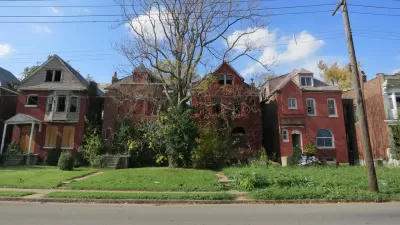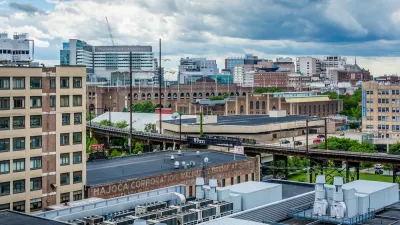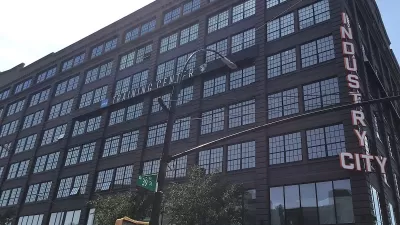Cities in flyover country are facing new redevelopment challenges as companies relocate from costly coastal cities. In St. Louis, downtown revitalization has also brought plans to tackle blight, and the consequences for residents could be immense.

Michael R. Allen writes that the tech company Square has plans to expand its St. Louis hub, part of what the city is heralding as a successful reinvigoration of downtown.
Square founder Jack Dorsey also has plans to clear blight in the city’s neighborhoods through a private company called the St. Louis Blight Authority, says Allen:
The government is off the hook, and the city reduces its sizable number of vacant houses. But all of the demolitions that [Jack] Dorsey and [Bill] Pulte are funding are on the city’s north side, while at the same time, the city is funneling millions in tax incentives into development elsewhere. The effect of St. Louis' efforts will increase the value of central city neighborhoods while demolishing and depreciating the north side.
Allen points out that other blight-reduction projects in the past have resulted in the destruction of poorer communities of color on the north side of St. Louis, rather than improvement and stabilization. He argues that the city lacks an effective plan to ensure this latest strategy does not negatively impact the most vulnerable St. Louis residents.
"Imagine if the city had secured a fund from Dorsey and Pulte to create micro-grants for small business startups—or home repair dollars—in the same north city neighborhood. Imagine if St. Louis and Detroit counted progress in some other way than number of vacant buildings demolished and number of downtown jobs added this year," says Allen.
FULL STORY: Downtown St. Louis Is Rising; Black St. Louis Is Being Razed

Study: Maui’s Plan to Convert Vacation Rentals to Long-Term Housing Could Cause Nearly $1 Billion Economic Loss
The plan would reduce visitor accommodation by 25,% resulting in 1,900 jobs lost.

North Texas Transit Leaders Tout Benefits of TOD for Growing Region
At a summit focused on transit-oriented development, policymakers discussed how North Texas’ expanded light rail system can serve as a tool for economic growth.

Why Should We Subsidize Public Transportation?
Many public transit agencies face financial stress due to rising costs, declining fare revenue, and declining subsidies. Transit advocates must provide a strong business case for increasing public transit funding.

How to Make US Trains Faster
Changes to boarding platforms and a switch to electric trains could improve U.S. passenger rail service without the added cost of high-speed rail.

Columbia’s Revitalized ‘Loop’ Is a Hub for Local Entrepreneurs
A focus on small businesses is helping a commercial corridor in Columbia, Missouri thrive.

Invasive Insect Threatens Minnesota’s Ash Forests
The Emerald Ash Borer is a rapidly spreading invasive pest threatening Minnesota’s ash trees, and homeowners are encouraged to plant diverse replacement species, avoid moving ash firewood, and monitor for signs of infestation.
Urban Design for Planners 1: Software Tools
This six-course series explores essential urban design concepts using open source software and equips planners with the tools they need to participate fully in the urban design process.
Planning for Universal Design
Learn the tools for implementing Universal Design in planning regulations.
City of Santa Clarita
Ascent Environmental
Institute for Housing and Urban Development Studies (IHS)
City of Grandview
Harvard GSD Executive Education
Toledo-Lucas County Plan Commissions
Salt Lake City
NYU Wagner Graduate School of Public Service





























